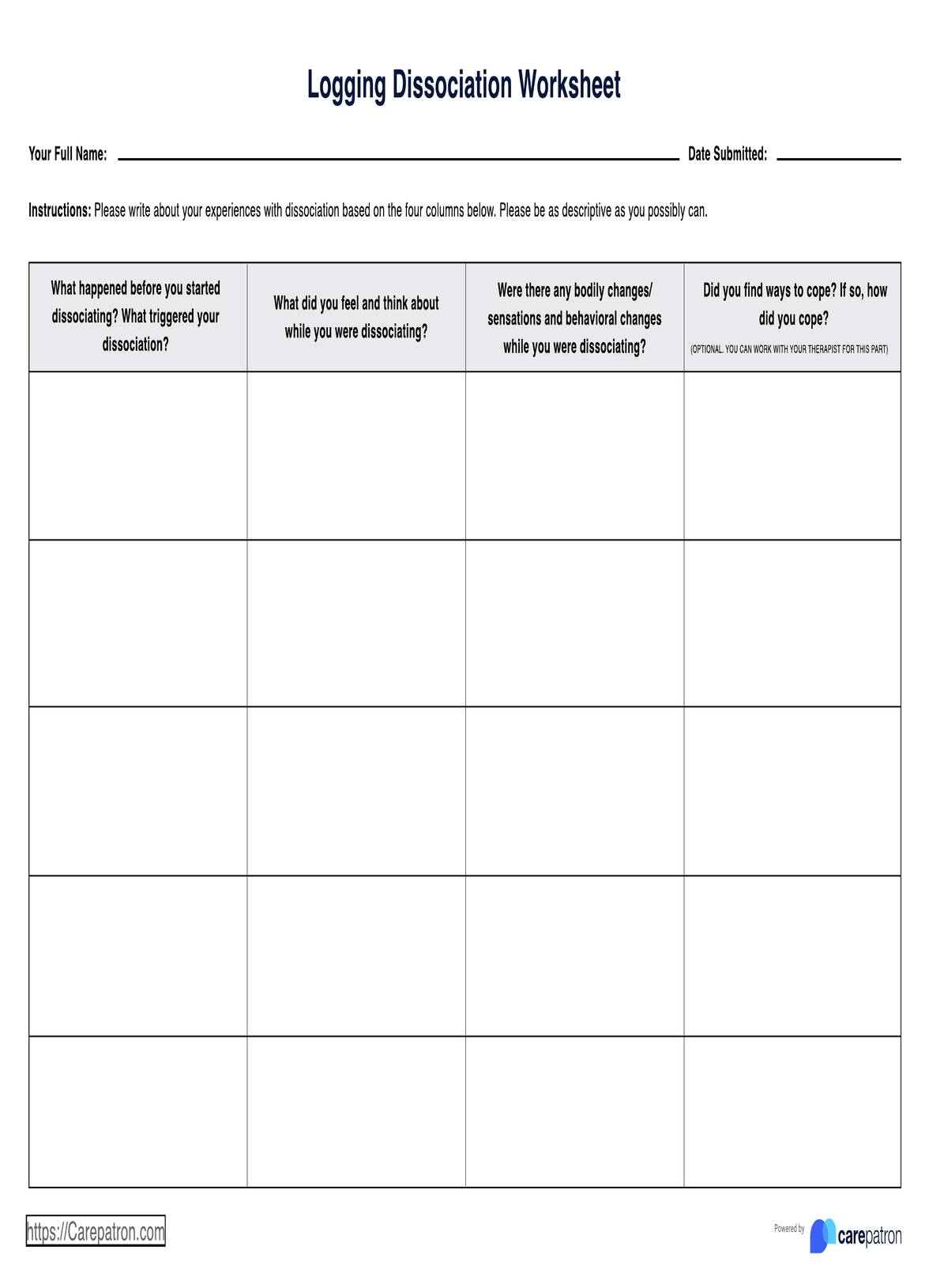It will depend on the person engaging with the worksheet. Some people can fill this out in minutes. Some may take days. Make sure to give your patient the time and space they need. For the sake of your therapy program, make sure to come to an agreement as to when they should submit it.

Logging Dissociation Worksheet
Discover how to use the Logging Dissociation Worksheet to help patients mange their dissociative experiences. Download our free template and PDF now.
Logging Dissociation Worksheet Template
Commonly asked questions
This worksheet will not guarantee that the patient will cope better with their dissociation, nor will it guarantee that they will work through the root causes of their dissociation. It will set the groundwork for those, at least because the patient will identify what causes them to dissociate, and what they do and feel when they dissociate.
If you’re aware that you dissociate and you want to do something about it, this worksheet can help you organize your thoughts and plan things out. So, by all means, use it! Just make sure that you don’t substitute this for therapy or counseling. If dissociation has negatively impacted your life, please consider enrolling yourself in a therapy program so a professional can help you develop healthy coping strategies and assist you with working through your problems.
EHR and practice management software
Get started for free
*No credit card required
Free
$0/usd
Unlimited clients
Telehealth
1GB of storage
Client portal text
Automated billing and online payments











